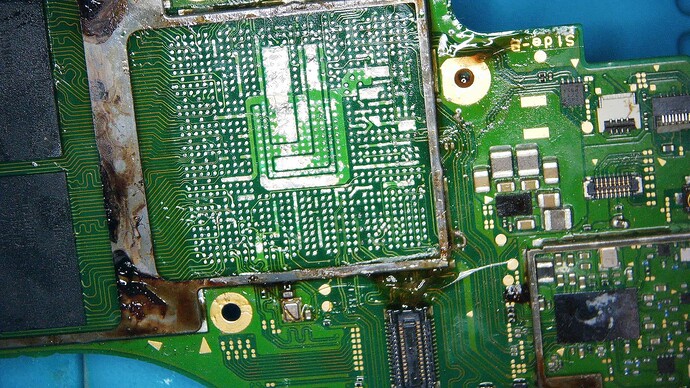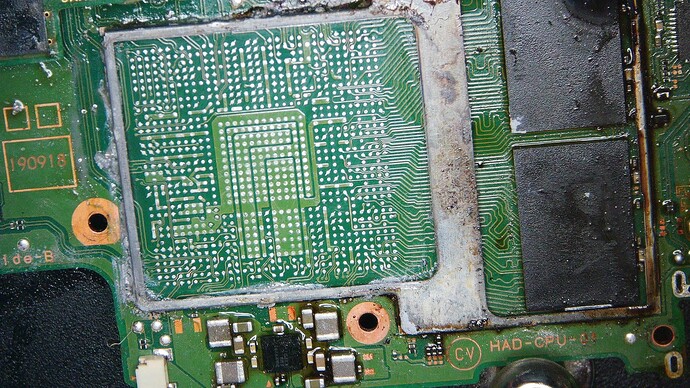First photo was my first attempt. Clearly it did not go well. I wasn’t having much luck with my iron so I decided to try using a hot air station and then my powered-off soldering iron to push the solder wick around to absorb the solder balls and that’s when things started going poorly. I had the temp set to 450 which was probably too high.
Second attempt I stuck with with iron at 750C and had some better luck. Probably not perfect but at least it held together for the most part.
Question is - is there any hope of saving the disaster in photo 1? Would a reball have any chance of hell of adhering correctly with all the solder mask missing?
Second question - do you see any issues within photo 2 that might cause an issue? It looks pretty good to me, but I could use some more experienced eyes on it.
If you want to clean pads, you need heat. A not powered iron is absorbing needed heat. I think the temps where to low at the ground planes, where you scraped the solder mask away.
I usually use a bigger tip for cleaning pads to have enough heat for the ground planes/pads. My soldering iron is set to 350°C. And I use a fine solder wick by Techspray and a good amount of flux. I cut the solder wick in aprox 20mm long stripes and put in on the pads and wait till the solder start to climb into the wick before start to moving the wick over the pads.
Soldermask is protecting lines near the pads, which should not touch another pad and prevent liquid solder to crawl over to the next solderball and disturb the bga pattern of evenly solderballs.
If you want to use Attempt 1, you have to apply solder mask and restore the pads.
On the second photo you have some lines between the pads, which seems to be not covered any more by solder mask.
Way to hot, at these temps you’d be likely to delaminate the board. (unless this is a typo and you mean deg F) . Also, you’ll potentially destroy your iron tip depending on the tip type.
Your first image as Calvin mentioned, your iron was likely not big enough and/or your station is incapable. If your iron is struggling bring your hot air in while your wicking with your iron, set your hot air to something like 150C / 200C low to medium air and wave it in the general direction that your wicking so it can help out. Also, from your first image your pressing on the wick too hard, it will basically act like a fantastic abrasive if you do this, provided things are all up to temp as they should be your don’t have to apply barely any pressure to the wick, it should basically just float.
these are all merges of the same plane so there is a chance things will work out, but as Calvin mentioned it might screw up come reflow time given the large area of the carnage  you could painstakingly re mask the void areas with UV solder mask but given all the solder contamination, I’d hazard the UV mask will just float once the solder below comes up to reflow
you could painstakingly re mask the void areas with UV solder mask but given all the solder contamination, I’d hazard the UV mask will just float once the solder below comes up to reflow 
Both your images, your using too much flux, after tinning the pads with leaded solder, and when coming in with your wick, just put a small blob of flux on your wick and that’s all you need. Hopefully you’ve got an ultrasonic, as excess flux like this (as you can see on the IC directly below the SoC) will attract contaminants (solder spatter etc) which may cause separate issues.

